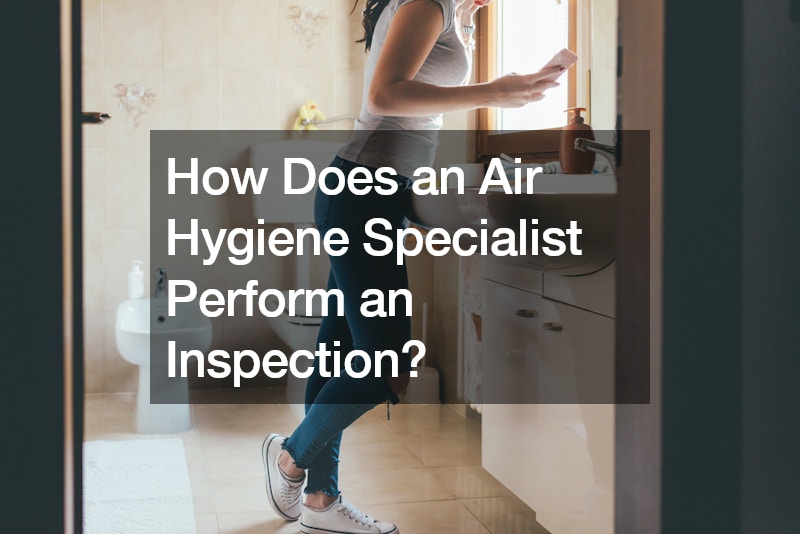In a world increasingly concerned with the quality of the environment we live in, air hygiene specialists play a critical role. These professionals are at the frontline in the battle against air pollution within indoor spaces, ensuring that our homes, offices, and public buildings are not only comfortable but also safe and compliant with health standards. Let’s dive into what a typical day looks like for these essential environmental warriors.
Morning: Assessment and Planning
The day of an air hygiene specialist often begins with a review of the day’s schedule and priorities. This might include preparing for site visits, reviewing reports from previous assessments, or planning for upcoming projects. Each activity is geared towards one goal: ensuring that indoor environments comply with both provincial and federal air pollution laws.
Before heading out, air hygiene specialists gather their tools and equipment, such as air sampling devices, monitoring equipment, and personal protective gear. Preparation is key, as the accuracy of their findings depends on proper equipment and meticulous planning.
Midday: Site Visits and Inspections
One of the primary responsibilities of an air hygiene specialist is to conduct on-site inspections. These visits can range from routine assessments to investigations triggered by complaints about air quality. During these inspections, specialists measure various contaminants, such as volatile organic compounds (VOCs), particulate matter, and carbon dioxide levels, using sophisticated air sampling and monitoring techniques.
Each site presents its own set of challenges. For instance, in a manufacturing facility, the specialist might focus on emissions from machinery, while in an office building, the emphasis might be on ventilation efficiency and the presence of allergens or mold.
Afternoon: Analysis and Collaboration
After collecting sufficient data, air hygiene specialists spend part of their afternoon analyzing the results. This involves not only raw data analysis but also comparing the findings against acceptable standards and guidelines. They use their expertise to identify sources of pollution and to understand the dynamics of air flow and contaminant distribution within buildings.
Collaboration is also a crucial part of their day. Air hygiene specialists often work closely with engineers, architects, and facility managers to devise solutions that address identified air quality issues. This might involve recommending changes to the HVAC system, suggesting the installation of air purifiers, or advising on the removal of certain materials that contribute to indoor pollution.
Late Afternoon: Reporting and Client Meetings
Towards the end of the day, air hygiene specialists prepare detailed reports on their findings. These reports are crucial for documentation and compliance purposes and are often shared with stakeholders to support recommended changes or interventions. Effective communication skills are essential here, as these reports must be clear and understandable to non-specialists.
Client meetings are an integral part of the specialist’s schedule. During these meetings, air hygiene specialists present their findings, discuss potential solutions, and help clients understand the importance of maintaining good indoor air quality. These interactions not only help in managing the current issues but also in building long-term relationships and planning for preventive measures.
Continuous Learning and Professional Development
Given the evolving nature of environmental regulations and emerging technologies, air hygiene specialists dedicate time to staying abreast of new trends, technologies, and best practices in air quality management. This might involve participating in webinars, attending conferences, or reading up on the latest research. There have also been advancements in the field that can help with this.
- Infrared Cameras: These tools are used to detect areas with moisture issues or insufficient insulation without the need for invasive probing. Infrared cameras can quickly identify spots where mold growth is likely or where there are leaks that could lead to moisture problems, both of which can significantly impact indoor air quality.
- Drone Surveillance: In large facilities or buildings with complex architecture, drones equipped with cameras can be used to inspect hard-to-reach areas such as high ceilings, ducts, and rooftops. This method not only improves the safety of the inspection process by reducing the need for physical access but also ensures a more thorough examination of the premises.
- Data Analytics: With the rise of IoT (Internet of Things) devices, air quality monitoring has become more dynamic. Continuous data generated from IoT sensors can be analyzed using sophisticated software to detect trends, predict potential problems, and provide more precise recommendations. This real-time data integration helps specialists track the effectiveness of implemented solutions over time and adjust strategies as environmental conditions or building usage changes.
Conclusion
The role of an air hygiene specialist is multifaceted and vital for public health. Each day brings new challenges and opportunities to make a significant impact on the environments in which we spend much of our time. For those passionate about environmental health and safety, a career as an air hygiene specialist offers a rewarding, challenging, and dynamic work environment where they can truly make a difference.
.
